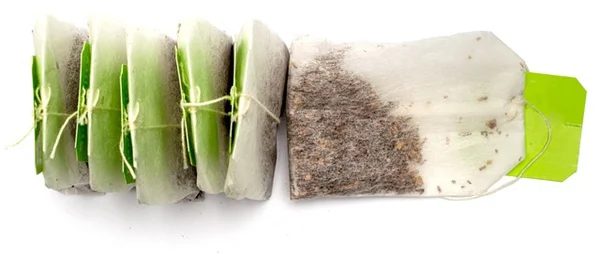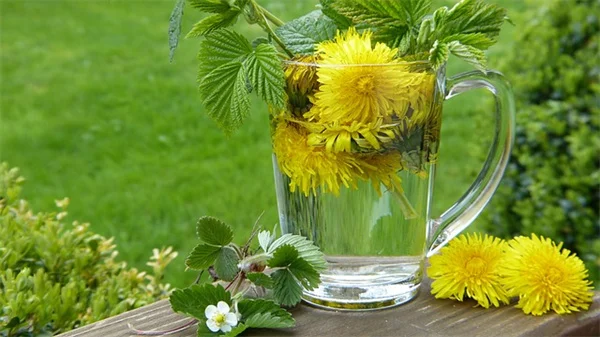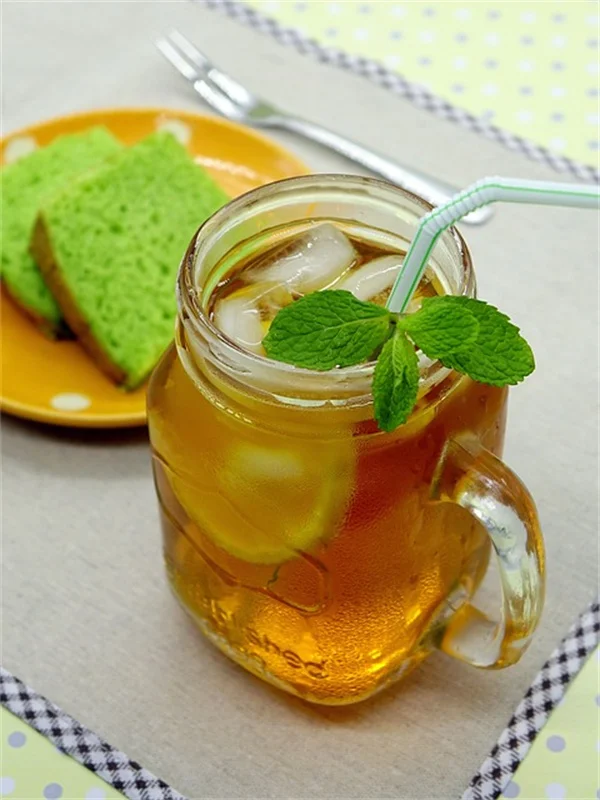How to Effectively Clean Linoleum Floors with Ground-In Dirt: A Step-by-Step Guide
Are you wondering how to clean linoleum floors with ground-in dirt? The solution is simpler than you might think! Cleaning linoleum floors can seem daunting, especially when dirt has settled in. However, with the right tools and techniques, you can restore your floors to their original shine. In this article, I’ll share my tried-and-true methods that not only tackle tough ground-in dirt but also maintain the beauty of your linoleum. Trust me, you’ll be amazed at how easy it is to keep your floors looking brand new! So, let’s roll up our sleeves and dive into the world of linoleum cleaning together! 🧽✨
E.g. :How to Clean Cork Floors: The Ultimate Guide for Stunning Results
- 1、Why Linoleum Floors Are a Great Choice for Your Home 🏡
- 2、The Secret Life of Dirt on Your Floors 🕵️♂️
- 3、Your Ultimate Linoleum Cleaning Toolkit 🧰
- 4、The Step-by-Step Deep Clean Method ✨
- 5、Prevention: The Secret to Less Cleaning 😎
- 6、Troubleshooting Common Linoleum Problems 🛠️
- 7、Linoleum Flooring Myths Debunked 🧐
- 8、Your Linoleum Questions Answered ❓
- 9、FAQs
Why Linoleum Floors Are a Great Choice for Your Home 🏡
The Eco-Friendly Champion of Flooring
Did you know linoleum is made from natural materials like linseed oil, wood flour, and jute? That's right - it's one of the most eco-friendly flooring options out there! Unlike vinyl, linoleum actually biodegrades over time. I recently helped my neighbor install linoleum in her kitchen, and she couldn't believe how sustainable it was compared to other options.
Here's a fun fact that might surprise you: linoleum was actually invented way back in 1860! That means this flooring has stood the test of time for over 160 years. The natural materials give it a slight, pleasant scent when first installed - kind of like walking into a warm bakery. And get this - it actually gets more durable over time as the linseed oil continues to harden!
Durability That Will Blow Your Mind
You might be wondering - "But how tough can this natural flooring really be?" Let me tell you, linoleum can handle just about anything your family throws at it (sometimes literally!). I've seen linoleum floors in school hallways that still look great after 20 years of kids running, dropping things, and general chaos.
Check out this comparison of how linoleum stacks up against other common flooring types:
| Flooring Type | Lifespan | Maintenance | Cost |
|---|---|---|---|
| Linoleum | 20-40 years | Easy | $$ |
| Vinyl | 10-20 years | Easy | $ |
| Hardwood | 30-100 years | High | $$$$ |
See what I mean? Linoleum gives you that sweet spot between affordability and longevity. And here's the kicker - it's naturally antimicrobial! That means it resists bacteria growth, making it perfect for kitchens and bathrooms.
The Secret Life of Dirt on Your Floors 🕵️♂️
 Photos provided by pixabay
Photos provided by pixabay
Where Does All This Dirt Come From?
Let's play detective for a minute. Have you ever stopped to think about where all that ground-in dirt actually comes from? I did an experiment last month where I placed a white mat by my front door for a week. You wouldn't believe the amount of dirt it collected!
Here are the main culprits bringing dirt into your home:
- Foot traffic (especially shoes!)
- Pets (those adorable little dirt magnets)
- Open windows (yes, even fresh air brings dust)
- Kids (do they attract dirt like magnets or what?)
The crazy thing is that most of this dirt isn't even visible at first. It's the fine particles that work their way into the surface over time. That's why regular cleaning is so important - you're not just cleaning what you can see, but preventing that invisible buildup that makes floors look dull.
Why Linoleum Loves to Hold Onto Dirt
Now here's something interesting - linoleum has a slightly porous surface. This is great because it gives the floor natural traction (no slipping!), but it also means dirt can get lodged in those tiny spaces. Think of it like a parking garage for dirt particles.
But don't worry! This isn't a design flaw - it's actually what makes linoleum so durable. That slight texture helps the floor withstand years of wear. The key is knowing how to properly clean it without damaging the surface. Which brings me to...
Your Ultimate Linoleum Cleaning Toolkit 🧰
The Must-Have Cleaning Squad
After years of trial and error (and some hilarious cleaning fails), I've perfected my linoleum cleaning arsenal. Here's what you'll need:
The Basics:
- Microfiber mop (trust me, regular mops just push dirt around)
- Soft-bristle broom (none of those stiff bristles that scratch)
- Bucket (get one with measurement marks - it helps!)
- Several clean microfiber cloths
The Cleaning Solutions:
- pH-neutral linoleum cleaner (this is your MVP)
- White vinegar (the natural cleaning powerhouse)
- Mild dish soap (for those everyday cleans)
- Baking soda (for tough spots)
Pro tip: Keep all these supplies in a caddy under your sink. When everything's organized, you're more likely to actually clean! I learned this the hard way after months of hunting for supplies every cleaning day.
 Photos provided by pixabay
Photos provided by pixabay
Where Does All This Dirt Come From?
Let me tell you about the time I discovered microfiber. I was using an old string mop and couldn't figure out why my floors never looked truly clean. Then my friend (a professional cleaner) introduced me to microfiber, and it was like someone turned on the lights!
Microfiber works because:
- The tiny fibers grab dirt instead of pushing it around
- It's super absorbent (no more streaky floors!)
- It's gentle enough not to scratch your linoleum
- You can wash and reuse it hundreds of times
Seriously, switching to microfiber was the best $15 I ever spent on cleaning supplies. Now I even keep a microfiber dust mop handy for quick daily touch-ups.
The Step-by-Step Deep Clean Method ✨
Preparation is Half the Battle
Before we dive into cleaning, let's set ourselves up for success. First, clear the floor completely - move small furniture, rugs, and that pile of mail you've been meaning to sort. I like to put on some upbeat music too - makes the time fly by!
Here's my foolproof prep routine:
- Open windows for ventilation
- Put on rubber gloves (protect those hands!)
- Fill one bucket with cleaning solution, one with rinse water
- Start from the farthest corner and work toward the door
Remember: "Clean doesn't mean clean until it's completely dry." That's my cleaning mantra. Rushing the drying process can leave streaks and even damage your floor over time.
The Actual Cleaning Process
Now for the main event! Here's how to tackle even the most stubborn ground-in dirt:
Step 1: Dry Clean
Always start by sweeping or vacuuming. I can't stress this enough - mopping before dry cleaning is like showering before taking off your muddy clothes!
Step 2: Spot Treatment
For really tough spots, make a paste of baking soda and water. Let it sit for 10 minutes, then gently scrub with a soft brush. This works wonders on those mystery stains by the fridge.
Step 3: The Main Clean
Use your pH-neutral cleaner according to directions. Work in 3x3 foot sections, mopping in a figure-8 pattern. This ensures complete coverage without missing spots.
Step 4: The Rinse
This is where most people go wrong. Always rinse with clean water to remove cleaner residue. Your floor should feel clean, not slippery or sticky.
Step 5: Dry Thoroughly
Use a dry microfiber mop to remove excess water. For bonus points, turn on a fan to speed up drying - this prevents water spots.
Pro tip: Clean your mop head after every use! A dirty mop just spreads grime around. I learned this after wondering why my "clean" floors still looked dingy.
Prevention: The Secret to Less Cleaning 😎
 Photos provided by pixabay
Photos provided by pixabay
Where Does All This Dirt Come From?
Want to know my secret to rarely needing deep cleans? It's all about prevention. Small daily habits can dramatically reduce how much dirt gets ground into your floors.
Here are my top three prevention tips:
1. The 30-Second Rule
When spills happen (and they will!), clean them within 30 seconds. The longer they sit, the more likely they are to stain or attract dirt. Keep a roll of paper towels in every room - it's a game changer!
2. The Magic of Doormats
Place high-quality doormats at every entrance. The rough texture scrapes dirt off shoes before it ever reaches your floors. I have one that says "Wipe Your Paws" - it makes guests smile while protecting my floors!
3. The Shoe-Free Zone
Implement a no-shoes policy. I know it can be tough to enforce, but the difference is night and day. My floors stay cleaner 3x longer since we started this habit.
Seasonal Maintenance Must-Dos
Beyond daily care, there are some seasonal tasks that'll keep your linoleum looking brand new:
Spring: Deep clean and apply a fresh coat of protective finish
Summer: Check for sun damage and rotate rugs to prevent fading
Fall: Pay extra attention to entryways as weather brings more dirt
Winter: Be vigilant about salt and moisture tracking in
I like to put these tasks in my phone calendar with reminders. That way I never forget, and my floors thank me all year round!
Troubleshooting Common Linoleum Problems 🛠️
When Good Floors Go Bad
Even with the best care, sometimes linoleum develops issues. Here's how to handle the most common problems:
Problem: Yellowing
Solution: This is often caused by sunlight or improper cleaners. Try a paste of baking soda and hydrogen peroxide, leave for 15 minutes, then rinse.
Problem: Scuff marks
Solution: Rub gently with a tennis ball (seriously!) or use a magic eraser for stubborn marks.
Problem: Warping
Solution: Usually caused by moisture. Place heavy books on the area until flat, then seal edges with linoleum adhesive.
Remember: Always test any solution in an inconspicuous area first. I learned this the hard way when a "miracle" cleaner left a permanent mark on my hallway floor!
When to Call in the Pros
While most linoleum issues can be DIY fixed, sometimes you need professional help. Call a flooring expert if you notice:
- Large bubbles or lifting sections
- Deep cuts or gashes
- Persistent discoloration that won't clean
- Any signs of water damage underneath
Pro tip: Many flooring companies offer free estimates. It's worth getting an expert opinion before attempting major repairs yourself. I once saved hundreds by having a pro properly diagnose what I thought was a ruined floor!
Linoleum Flooring Myths Debunked 🧐
Separating Fact from Fiction
There's a lot of misinformation out there about linoleum. Let's set the record straight on some common myths:
Myth: Linoleum is just cheap vinyl
Truth: They're completely different materials! Linoleum is natural, while vinyl is synthetic. The only similarity is they both start with "lin."
Myth: It's outdated and ugly
Truth: Modern linoleum comes in gorgeous designs that mimic wood, stone, and abstract patterns. My kitchen has linoleum that looks like reclaimed barnwood - guests are always shocked when I tell them it's not real wood!
Myth: It's hard to maintain
Truth: With proper care (like we've discussed), linoleum is actually one of the easiest floors to maintain. The key is using the right techniques.
Why These Myths Persist
Most linoleum myths come from people remembering their grandma's linoleum from the 1970s. Today's linoleum is lightyears ahead in technology and design. The manufacturing process has improved dramatically, resulting in:
- More durable surfaces
- Better color retention
- More design options
- Improved stain resistance
It's like comparing a 1970s station wagon to a modern electric car - same basic concept, but completely different execution!
Your Linoleum Questions Answered ❓
The Top Questions I Get Asked
After years of helping friends and family with their linoleum floors, I've heard just about every question imaginable. Here are the most common ones with my tried-and-true answers:
Q: How often should I really clean my linoleum floors?
A: Sweep daily, damp mop weekly, and deep clean every 3-6 months depending on traffic. More if you have pets or kids!
Q: Can I use steam mops on linoleum?
A: Generally no - the heat and moisture can damage the adhesive. Stick to traditional mopping methods.
Q: Why does my floor look dull even after cleaning?
A: You're probably using the wrong cleaner or not rinsing properly. Try switching to a pH-neutral cleaner and always rinse thoroughly.
One Last Pro Tip
Here's my golden rule for linoleum care: "Treat it gently but clean it thoroughly." This means:
- No harsh scrubbing
- No abrasive cleaners
- No letting spills sit
- No skipping the rinse step
Follow this philosophy, and your linoleum floors will stay beautiful for decades. My own kitchen floor is going on 15 years and still gets compliments regularly!
By now, you should feel equipped to tackle even the toughest ground-in dirt on your linoleum floors. We've explored the eco-friendly benefits of linoleum, its durability, and the essential cleaning tools you'll need. Remember, it's not just about cleaning the visible dirt; it's about preventing that sneaky buildup that dulls your beautiful floors. I recommend you establish a routine that includes daily sweeping and regular deep cleans. Trust me, your floors will thank you! If you implement these steps, you'll find that maintaining your linoleum is easier than you thought. Don't hesitate to share your cleaning successes or any tips you've discovered along the way in the comments below. Let's keep the conversation going and help each other achieve those sparkling linoleum floors! ✨
Additionally, consider exploring related topics like the best linoleum finishes or how to choose the right cleaning products for your specific flooring type. I can’t stress enough the importance of understanding the materials you’re working with. If you have pets or kids, integrating a protective finish could save you from future headaches. Keeping your linoleum looking fresh and vibrant doesn’t have to be a chore; it can be a fun and rewarding part of your home care routine. Let’s dive deeper into these aspects together for a cleaner, healthier home environment! 🏡
E.g. :How To Clean Linoleum Floors With Ground in Dirt - Maintenance One
FAQs
What are the main benefits of linoleum flooring?
Linoleum flooring is a fantastic choice for several reasons. First, it's made from natural materials, making it one of the most eco-friendly options available. It biodegrades over time, unlike synthetic flooring like vinyl. Additionally, linoleum is incredibly durable, often lasting 20-40 years with proper care. It's also naturally antimicrobial, making it a smart choice for kitchens and bathrooms. I've seen firsthand how it can withstand the chaos of family life while still looking great!
How do I maintain my linoleum floors?
To keep your linoleum floors looking their best, regular maintenance is key. I recommend sweeping daily to remove dirt and debris, damp mopping weekly, and performing a deep clean every 3-6 months, especially if you have pets or kids. Using a pH-neutral cleaner will help avoid dullness. Remember, prevention is also important—implementing habits like a no-shoes policy can greatly reduce dirt buildup!
Can I use any cleaning solution on my linoleum?
It's essential to use the right cleaning solutions for linoleum. Avoid harsh chemicals and stick to pH-neutral cleaners, white vinegar, or mild dish soap. I learned the hard way that some cleaners can damage the surface. Always remember to rinse thoroughly after cleaning to prevent any residue that can leave your floors looking dull. If you're unsure, testing a small area first is a smart move!
What should I do if my linoleum starts to yellow?
Yellowing in linoleum is often caused by sunlight or the wrong cleaners. To tackle this, try a paste made from baking soda and hydrogen peroxide. Apply it to the affected area, let it sit for about 15 minutes, and then rinse it off. If the problem persists, consider consulting a flooring professional for more tailored advice. I found this method particularly effective in restoring my own floors to their original luster!
Are there any common myths about linoleum?
Absolutely! One common myth is that linoleum is just another name for cheap vinyl. In reality, linoleum is made from natural materials, while vinyl is synthetic. Another myth is that linoleum is outdated and unattractive. Modern designs can mimic wood or stone beautifully! I have linoleum that looks just like reclaimed barnwood, and guests are always surprised to learn it’s not real wood. Don’t let these myths hold you back from choosing this amazing flooring option!


